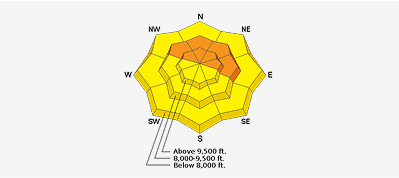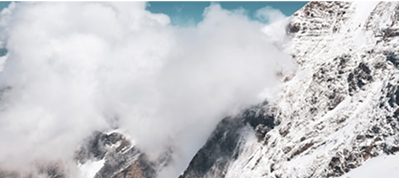Figured I might as well take a quick look at the trophy-size surface hoar on the way back from Forest Service training in Huntsville, so I drove over North Ogden Pass and made a quick stop. I was not disappointed - average size of the widespread hoar feathers was more than 20 mm (3/4 of an inch). Beneath the surface hoar, was a decent 10 cm (4 inch) layer of near surface facets. No results with compression tests or ECT tests on any of the layers, shovel shear tests helped to find layers.
Surface hoar is super fragile, with sun and wind easily destroying it. Looking at tonight's weather forecast, the winds are forecast to pick up at the upper elevations, but not at the mid and lower elevations. So it's hard to see all the surface hoar and the near surface facets being destroyed on wind sheltered mid and lower elevation slopes. Whether this weak facets get buried and preserved will be important to determine. The few inches of snow that is forecast will probably lead to more and larger sluffing in the short term.

I think it will be important to keep track of how much snow we get at the lower elevations, in addition to usual mid and upper elevations. Steep slopes like these can be dangerous if they end on flat roads, hiking trails, creeks or other terrain traps where even a small sluff can pile up. Even with the low snow numbers in the forecast, I'd be thinking about sluffing after this first storm.









